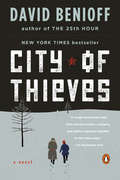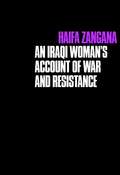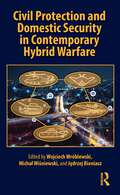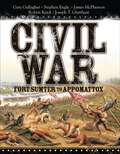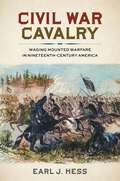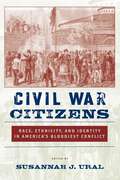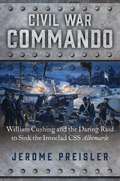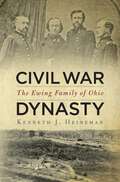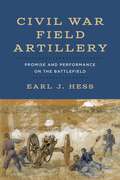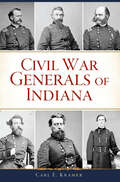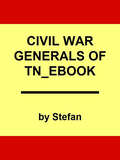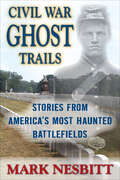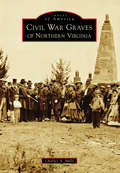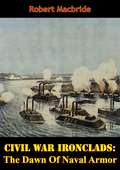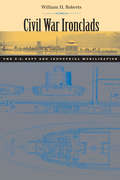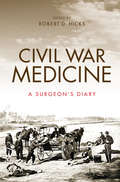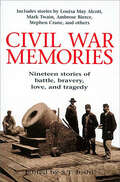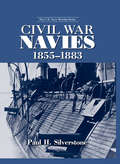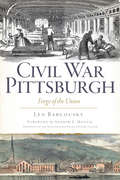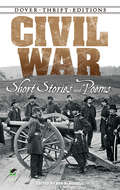- Table View
- List View
City of Thieves: A Novel
by David BenioffFrom the critically acclaimed author of The 25th Hour and When the Nines Roll Over and co-creator of the HBO series Game of Thrones, a captivating novel about war, courage, survival — and a remarkable friendship that ripples across a lifetime. During the Nazis’ brutal siege of Leningrad, Lev Beniov is arrested for looting and thrown into the same cell as a handsome deserter named Kolya. Instead of being executed, Lev and Kolya are given a shot at saving their own lives by complying with an outrageous directive: secure a dozen eggs for a powerful Soviet colonel to use in his daughter’s wedding cake. In a city cut off from all supplies and suffering unbelievable deprivation, Lev and Kolya embark on a hunt through the dire lawlessness of Leningrad and behind enemy lines to find the impossible. By turns insightful and funny, thrilling and terrifying, the New York Times bestseller City of Thieves is a gripping, cinematic World War II adventure and an intimate coming-of-age story with an utterly contemporary feel for how boys become men.From the Trade Paperback edition.
City of Widows: An Iraqi Woman's Account of War and Resistance
by Haifa ZanganaIn City of Widows, Haifa Zangana tells the story of her country, from the early twentieth century through the US-UK invasion and the current occupation. She brings to light a sense of Iraq as a society mainly of secularists who have been denied, through years of sanctions, war, and occupation, a system within which to build the country according to their own values. She points to the long history of political activism and social participation of Iraqi women, and the fact that, before the recent invasion, they had been among the most liberated of their gender in the Middle East. Finally, she writes about Baghdad today as a city populated by bereaved women and children who have lost their loved ones and their land, but who are still emboldened by the native right to resist and liberate themselves to create an independent Iraq.
Civic Engagement in Postwar Japan
by Rieko KageDespite reduced incomes, diminished opportunities for education, and the psychological trauma of defeat, Japan experienced a rapid rise in civic engagement in the immediate aftermath of World War II. Why? Civic Engagement in Postwar Japan answers this question with a new general theory of the growth in civic engagement in postwar democracies. It argues that wartime mobilization unintentionally instills civic skills in the citizenry, thus laying the groundwork for a postwar civic engagement boom. Meanwhile, legacies of prewar associational activities shape the costs of association-building and information-gathering, thus affecting the actual extent of the postwar boom. Combining original data collection, rigorous statistical methods, and in-depth historical case analyses, this book illuminates one of the keys to making postwar democracies work.
Civil Liberties in Britain During the 2nd World War: A Political Study (Routledge Library Editions: WW2 #5)
by Neil StammersWar and such crises are seen as aberrations in the history and development of democracy – a time when otherwise unacceptable constraints can be imposed on the ordinary man with little or no dissent. The reasoning behind this is questioned in this book, first published in 1983. It makes a detailed study of government policy towards civil liberties in Britain during the Second World War, the nature of crisis government and its implications for democracy. Drawing on government documents and other primary sources, the book examines policies implemented, such as the Emergency Powers (Defence) Act of 1939 and Regulation 18B. Other government policies such as the internment of enemy aliens, restrictions on the media and the mobilisation of propaganda for the war effort are analysed thoroughly.
Civil Protection and Domestic Security in Contemporary Hybrid Warfare
by Wojciech Wróblewski Michał Wiśniewski Jędrzej BieniaszCivil Protection and Domestic Security in Contemporary Hybrid Warfare presents a comprehensive approach to civil protection and domestic security in contemporary hybrid armed conflict.Hybrid warfare encompasses a number of dimensions such as military, political, psychological, cognitive, space, social, economic, informational, or technological. Current conflicts show that hybrid warfare, despite regional differences, is based on a common operational framework that combines conventional and unconventional tactics targeting not only military structures, but also largely targeting civilians (societies). All this makes threats more diffuse, subtle, and difficult to predict. They also often take the form of networked actions and have cascading effects in which they can produce complex secondary effects affecting a range of spheres of society and key infrastructure. In response to this spectrum of threats, individual states need to adapt their security and civil protection systems to the type of threat involved. However, most existing solutions are fragmented, resulting in a reduced ability to coordinate and adequately prepare civilians for hybrid threat conditions. Given these challenges, the book establishes a common language that helps shape coherent risk management and protective mechanisms in dealing with hybrid attacks. It also points in a new direction in ensuring the reliability of information provided to civilians, which is crucial in a hybrid war environment where disinformation is used as one of the main tools of destabilisation. Drawing on theoretical knowledge and practical experiences from around the world, the book provides tools to effectively respond to existing and future conflicts and hybrid wars. Above and beyond this, bridging the gap between concrete knowledge of hybrid warfare and operational needs, this book explores how public administrations, public services, NGOs, local communities, and other actors play a key role in protecting the population during such non-traditional armed conflicts.Civil Protection and Domestic Security in Contemporary Hybrid Warfare is a vital resource to government and civilian specialists responsible for population security and protection, helping them and their civilian populations to strategise and, oftentimes, to individually mitigate the risk of loss of life or health—as has been demonstrated in the Russia-Ukraine conflict.
Civil War
by Gary GallagherThis book explores the political, historical, and cultural significance of the Civil War, AKA the War Between the States, examining its impact on the civilians and military personnel caught up in it.From the Civil War's outbreak at Fort Sumter, South Carolina in April 1861 until its conclusion at the Appomattox Court House, more than 10,000 battles, engagements and skirmishes were recorded across the length and breadth of America. Undoubtedly the most cataclysmic military struggle of the late nineteenth century, this war spanned four bloody years of fighting in which over 620,000 American soldiers and sailors lost their lives.
Civil War
by John StanchakHere is a dramatic guide to the war that split the Union. Eyewitness Civil War includes everything from the issues that divided the country, to the battles that shaped the conflict, to the birth of the reunited states. Discover legendary commanders, unsung heroes and heroines, rare documents, powerful weapons, and priceless artifacts combine with stories of courage, adventure, and defiance to paint an unforgettable portrait of the American Civil War.
Civil War Battleship: The Monitor (Penguin Young Readers, Level 4)
by Gare ThompsonThe U.S.S. Monitor was an entirely new type of warship when it launched in 1862. Dubbed "the forefather of the modern Navy," this ironclad ship changed how wars are fought at sea. But on New Year's Eve, 1862, it sank off the coast of North Carolina in a terrible storm. No one thought the Monitor could be raised, but after 140 years, parts of the ironclad have finally been brought to the surface. This book chronicles the Monitor's revolutionary design, exciting battle, and intriguing excavation. Illustrated by Larry Day.
Civil War Cavalry: Waging Mounted Warfare in Nineteenth-Century America
by Earl J. HessThe Civil War produced the largest cavalry force ever raised in American history. In Civil War Cavalry, Earl J. Hess examines that force comprehensively and from new perspectives, challenging standard views of the war’s mounted arm. Hess surveys the organization, training, administration, arming, and mounting of cavalry units and examines mounted troops’ tactical formations and maneuvers. He addresses the nature of cavalry operations, discussing the mounted charge, dismounted fighting, long-distance raids, the varied types of weapons used by troopers, and the difficulty of supplying horses. Hess also brings concepts from the burgeoning field of animal history to argue that cavalry mounts exercised a degree of agency in shaping their role in the large military machine. Civil War Cavalry is a sweeping and innovative history, establishing a new criterion for understanding how Americans waged mounted warfare in the mid-nineteenth century.
Civil War Citizens: Race, Ethnicity, and Identity in America’s Bloodiest Conflict
by Susannah J. UralAt its core, the Civil War was a conflict over the meaning of citizenship. Most famously, it became a struggle over whether or not to grant rights to a group that stood outside the pale of civil-society: African Americans. But other groups--namely Jews, Germans, the Irish, and Native Americans--also became part of this struggle to exercise rights stripped from them by legislation, court rulings, and the prejudices that defined the age.Grounded in extensive research by experts in their respective fields, Civil War Citizens is the first volume to collectively analyze the wartime experiences of those who lived outside the dominant white, Anglo-Saxon Protestant citizenry of nineteenth-century America. The essays examine the momentous decisions made by these communities in the face of war, their desire for full citizenship, the complex loyalties that shaped their actions, and the inspiring and heartbreaking results of their choices-- choices that still echo through the United States today. Contributors: Stephen D. Engle, William McKee Evans, David T. Gleeson, Andrea Mehrländer, Joseph P. Reidy, Robert N. Rosen, and Susannah J. Ural.
Civil War Commando: William Cushing and the Daring Raid to Sink the Ironclad CSS Albemarle
by Jerome PreislerCivil War Ironclads and CommandosHere at last is an action-packed portrait of one of America&’s greatest but little-remembered Civil War heroes, Commander William Barker Cushing, who sank the Confederate ironclad Albemarle in a spectacular mission in 1864.Regarded as erratic and insubordinate, Midshipman Cushing was drummed out of the Naval Academy in March 1861. But with the outbreak of war, the Union needed every trained officer it could find— and whatever his flaws, Cushing was an extremely talented naval officer. Ferocious, uncompromising, courageous, and loyal, he became a U.S. Navy commando and at the age of twenty-one was sent to destroy the South&’s ultimate naval weapon—the Albemarle, an unsinkable vessel with a devastating iron ram.This death-defying mission succeeded in sinking the Albemarle, helped reelect President Abraham Lincoln, and earned Cushing a hero&’s grave in the Naval Academy&’s cemetery.Here is that story, told with all the verve and drama it deserves, shining new light on one of the most important naval encounters of the war. Civil War Commando is a masterpiece of naval history that reads like a thriller and gives a neglected hero his due.
Civil War Dynasty: The Ewing Family of Ohio
by Kenneth J HeinemanFor years the Ewing family of Ohio has been lost in the historical shadow cast by their in-law, General William T. Sherman. In the era of the Civil War, it was the Ewing family who raised Sherman, got him into West Point, and provided him with the financial resources and political connections to succeed in war. The patriarch, Thomas Ewing, counseled presidents and clashed with radical abolitionists and southern secessionists leading to the Civil War. Three Ewing sons became Union generals, served with distinction at Antietam and Vicksburg, marched through Georgia, and fought guerrillas in Missouri. The Ewing family stood at the center of the Northern debate over emancipation, fought for the soul of the Republican Party, and waged total war against the South.In Civil War Dynasty, Kenneth J. Heineman brings to life this drama of political intrigue and military valor—warts and all. This work is a military, political, religious, and family history, told against the backdrop of disunion, war, violence, and grief.
Civil War Field Artillery: Promise and Performance on the Battlefield
by Earl J. HessThe American Civil War saw the creation of the largest, most potent artillery force ever deployed in a conflict fought in the Western Hemisphere. It was as sizable and powerful as any raised in prior European wars. Moreover, Union and Confederate artillery included the largest number of rifled pieces fielded in any conflagration in the world up to that point. Earl J. Hess’s Civil War Field Artillery is the first comprehensive general history of the artillery arm that supported infantry and cavalry in the conflict. Based on deep and expansive research, it serves as an exhaustive examination with abundant new interpretations that reenvision the Civil War’s military. Hess explores the major factors that affected artillerists and their work, including the hardware, the organization of artillery power, relationships between artillery officers and other commanders, and the influence of environmental factors on battlefield effectiveness. He also examines the lives of artillerymen, the use of artillery horses, manpower replacement practices, effects of the widespread construction of field fortifications on artillery performance, and the problems of resupplying batteries in the field. In one of his numerous reevalutions, Hess suggests that the early war practice of dispersing guns and assigning them to infantry brigades or divisions did not inhibit the massing of artillery power on the battlefield, and that the concentration system employed during the latter half of the conflict failed to produce a greater concentration of guns. In another break with previous scholarship, he shows that the efficacy of fuzes to explode long-range ordnance proved a problem that neither side was able to resolve during the war. Indeed, cumulative data on the types of projectiles fired in battle show that commanders lessened their use of the new long-range exploding ordnance due to bad fuzes and instead increased their use of solid shot, the oldest artillery projectile in history.
Civil War Generals of Indiana (Civil War Series)
by Carl E. KramerMeet the Hoosier Generals of America's ConflictWhen the Civil War erupted, the Union and the Confederacy faced the challenge of organizing huge armies of volunteers with little or no military experience. Crucial to this task was finding generals, and Indiana answered this call with approximately 120 of them. Though a competent division and corps commander, Ambrose E. Burnside's leadership of the Army of the Potomac at Fredericksburg proved disastrous. Jefferson Columbus was a relentless commander but murdering his superior in a Louisville hotel halted his probable rise to major general. As commander of the Louisville Legion, Lovell H. Rousseau was the only Civil War general commissioned by a city.Compiling years of research, historian Carl E. Kramer provides biographical sketches of every identifiable Indiana general who attained full-rank, brevet, and state-service status in the tragic struggle.
Civil War Generals of Tennessee
by Randy BishopFrom James Patton Anderson to Felix Zollicoffer, author Randy Bishop, a native Tennessean, offers compelling portraits of the sons of a state regarded by many as the most torn asunder by the War Between the States. This collection brings together biographies of the fifty-one Confederate and Union generals born in Tennessee as well as those with significant ties to the state. Each entry focuses on the major military contributions of the individuals—no matter their affiliations—and also teases out the most intriguing aspects of their civilian life, particularly how they fared after the war. With fascinating details, including the men&’s relationships before the divisiveness of war drove intruded, Bishop provides an insight into lives that have rarely been seen as a whole. Arranged in alphabetical order for ease of reference, the work includes such luminaries as Nathan Bedford Forrest and Leonidas Polk, while also detailing the contributions of many lesser-known figures, including Samuel Powhatan Carter and Otho French Strahl. Each entry spans approximately five pages and provides, as the author states, &“insight into the contributions of selfless men who offered their best, in years of their lives as well as time, that could have been spent with their families.&”
Civil War Ghost Trails: Stories from America's Most Haunted Battlefields
by Mark NesbittRiveting ghost stories with history from all the major engagements of the war.Civil War Ghost Trails examines the major engagements of the Civil War and their connections to the paranormal world. The history of each battlefield is followed by the classic ghost stories that have been around since the guns fell silent. Mark Nesbitt also collected newer stories and attempted a paranormal investigation, including Electronic Voice Phenomena (EVP), at many of the sites to see what could be found. In some cases, the results were astounding. Some of the spirits included in the book are the Headless Zouave at Bull Run, the Drummer Boy at Shiloh, and the Phantom Battalion at Gettysburg. Ghosts appear at the Bloody Lane at Antietam and Caroline Street in Fredericksburg, as well as sites at Chancellorsville, Vicksburg, Chickamauga, Chattanooga, Petersburg, and Appomattox Court House. A special section of the book explores the haunted Civil War prisons at Johnson&’s Island in Ohio, Point Lookout in Maryland, and Andersonville in Georgia. Abraham Lincoln&’s many White House apparitions are discussed in a section on wartime Washington, D.C.
Civil War Graves of Northern Virginia (Images of America)
by Charles A. MillsMany reminders of the Civil War were left behind in Northern Virginia for future generations to ponder. Also left behind were the graves of those who took part in the tumultuous events of war. Northern Virginia is a treasure house of history, perhaps more so than any other part of the country. One unique way of experiencing that history is by visiting one of the region's many historic cemeteries. Cemeteries have been called open-air museums, and every gravestone has a story to tell. There are some 1,000 cemeteries in Northern Virginia, ranging from small family plots to huge national cemeteries covering hundreds of acres. Many of these cemeteries contain the remains of Civil War veterans. This book is not meant to be an inclusive survey of every cemetery in the region, but rather it is a presentation of the Civil War history of Northern Virginia through the medium of cemeteries.
Civil War Ironclads: The Dawn Of Naval Armor
by Robert MacbrideCivil War expert Robert MacBride charts the history of the ironclads of the Civil War, heavily illustrated with plans and diagrams.The battle between the USS Monitor and the CSS Virginia (nee Merrimack), at Hampton Roads was neither the beginning nor the end of the story of the ironclad warships in the Civil War. Both the Union and the Confederate navies not only had other ironclad ships in commission at the time of the battle, they already had used them in combat. The months following saw the appearance of squadrons of monitors and casemate ironclads of the general design of the Virginia. It is with the sequels to the Battle of Hampton Roads that this book is primarily concerned.
Civil War Ironclads: The U.S. Navy and Industrial Mobilization (Johns Hopkins Studies in the History of Technology)
by William H. RobertsHonorable Mention, Science and Technology category, John Lyman Book Awards, North American Society for Oceanic HistoryCivil War Ironclads supplies the first comprehensive study of one of the most ambitious programs in the history of naval shipbuilding. In constructing its new fleet of ironclads, William H. Roberts explains, the U.S. Navy faced the enormous engineering challenges of a largely experimental technology. In addition, it had to manage a ship acquisition program of unprecedented size and complexity. To meet these challenges, the Navy established a "project office" that was virtually independent of the existing administrative system. The office spearheaded efforts to broaden the naval industrial base and develop a marine fleet of ironclads by granting shipbuilding contracts to inland firms. Under the intense pressure of a wartime economy, it learned to support its high-technology vessels while incorporating the lessons of combat.But neither the broadened industrial base nor the advanced management system survived the return of peace. Cost overruns, delays, and technical blunders discredited the embryonic project office, while capital starvation and never-ending design changes crippled or ruined almost every major builder of ironclads. When Navy contracts evaporated, so did the shipyards. Contrary to widespread belief, Roberts concludes, the ironclad program set Navy shipbuilding back a generation.
Civil War Journal
by Albert A. NofiDID YOU KNOW THAT... * The room in which Robert E. Lee was born was also the birthplace of two signers of the Declaration of Independence * Philip Sheridan was suspended from West Point for a year because of a "quarrel of belligerent character" * During the election of 1860, Northern States cast a quarter of a million more votes against Lincoln that did the entire South * George McClellan had to secure special permission to be admitted to West Point--because he was only 15 * At least one woman served as a "drummer boy" during the Civil War * The famed U.S.S. Monitor was the first warship to have flush toilets From the fascinating to the frivolous, A Civil War Journal presents little-known facts that will both entertain and enlighten you. This entertaining and informative chronicl e of the Civil War and the people who waged it shines a new light on the hidden corners of history, bringing you more than 500 surprising episodes, eye-opening anecdotes, and little-known facts. From the private eccentricities of well-known figures to sobering statistics about the war itself, these pages reveal: * What Union victory took place in Japan * How many cigars Grant smoked each day * Why Abraham Lincoln grew a beard * Why Major General James Longstreet wore carpet slippers at the battle of Antietem * Why a Union warship was named after a Confederate general * How many Confederate flags were captured at Gettysburg * How much money the U.S. spent on the war per day in 1865 * Who the last surviving Civil War general was and open your eyes to the tremendous impact the war had on soldiers and civilians alike. The perfect browsing book for Civil War buffs, trivia mavens, and the insatiably curious, A Civil War Journal is a treasure trove of odd information and unusual insights.
Civil War Medicine: A Surgeon's Diary
by Robert D. HicksIn this never before published diary, 29-year-old surgeon James Fulton transports readers into the harsh and deadly conditions of the Civil War as he struggles to save the lives of the patients under his care. Fulton joined a Union army volunteer regiment in 1862, only a year into the Civil War, and immediately began chronicling his experiences in a pocket diary. Despite his capture by the Confederate Army at Gettysburg and the confiscation of his medical tools, Fulton was able to keep his diary with him at all times. He provides a detailed account of the next two years, including his experiences treating the wounded and diseased during some of the most critical campaigns of the Civil War and his relationships with soldiers, their commanders, civilians, other health-care workers, and the opposing Confederate army. The diary also includes his notes on recipes for medical ailments from sore throats to syphilis. In addition to Fulton's diary, editor Robert D. Hicks and experts in Civil War medicine provide context and additional information on the practice and development of medicine during the Civil War, including the technology and methods available at the time, the organization of military medicine, doctor-patient interactions, and the role of women as caregivers and relief workers. Civil War Medicine: A Surgeon's Diary provides a compelling new account of the lives of soldiers during the Civil War and a doctor's experience of one of the worst health crises ever faced by the United States.
Civil War Memories: Nineteen Stories of Battle, Bravery, Love, and Tragedy
by Mark Twain Louisa May Alcott Stephen Crane Ambrose BierceA collection of short fiction portraying all phases of the war from Louisa May Alcott, Mark Twain, Ambrose Bierce, Stephen Crane, Henry James, and others.Civil War Memories is a compilation of nineteen stories of the Civil War written in the late 1800s, giving them a ring of authenticity. The voices are both Northern and Southern, male and female, angry and melancholy, serious and comic; but they all treat the Civil War as a watershed in American history and in the lives of those who lived through it.Authors include: Bret Harte, Thomas Bailey Aldrich, W. C. Morrow, Stephen Crane, Ambrose Bierce, Rebecca Harding Davis, Louisa May Alcott, Albion W. Tourgée, George Cary Eggleston, Mark Twain, Henry James, Grace E. King, Harold Frederic, John William De Forest, Kate Chopin, Thomas Nelson Page, Sarah Orne Jewett, Edward Lucas White, Henry Timrod.
Civil War Navies, 1855-1883 (The U.S. Navy Warship Series)
by Paul SilverstoneCivil War Navies 1855-1883 is the second in the five-volume US Navy Warships encyclopedia set. This valuable reference lists the ships of the U.S. Navy and Confederate Navy during the Civil War and the years immediately following - a significant period in the evolution of warships, the use of steam propulsion, and the development of ordnance. Civil War Navies provides a wealth and variety of material not found in other books on the subject and will save the reader the effort needed to track down information in multiple sources. Each ship's size and time and place of construction are listed, along with particulars of naval service. The author provides historical details that include actions fought, damage sustained, prizes taken, ships sunk, and dates in and out of commission, as well as information about when the ship left the Navy, names used in other services, and its ultimate fate. 140 photographs, including one of the Confederate cruiser Alabama recently uncovered by the author further contribute to this indispensable volume. This definitive record of Civil War ships updates the author's previous work and will find a lasting place among naval reference works.
Civil War Pittsburgh: Forge of the Union (Civil War Series)
by Andrew E. Masich Len BarcouskyOn Christmas Day 1860, the "Daily Pittsburgh Gazette "announced that more than one hundred cannons from the nearby U.S. Arsenal were to be shipped south. Fiercely loyal to the Union, Pittsburghers halted the movement of the artillery, which would have been seized by secessionist sympathizers. Over the course of the Civil War, Pittsburgh and Allegheny County provided both troops and equipment--including heavy artillery--in disproportionately large numbers. While no major battles were fought nearby, local soldiers and civilians sacrificed and suffered--the Allegheny Arsenal explosion in September 1862 left seventy-eight dead and was the worst civilian disaster of the war. Thousands dug trenches and joined militia companies to defend their city as others worked to support the wounded soldiers. Reporter Len Barcousky draws on the next-day reporting of the predecessors of the "Pittsburgh Post-Gazette "to craft a gripping and insightful view of the Steel City during the Civil War.
Civil War Short Stories and Poems (Dover Thrift Editions)
by Bob BlaisdellThis anthology commemorates the 150th anniversary of the American Civil War with reflections from both sides of the conflict. Compiled by an expert in the literature of the era, the poems and short stories appear in chronological order. They trace the war's progress and portray a gamut of moods, from the early days of eagerness to confront the foe to long years of horror at the ongoing carnage and sad relief at the struggle's end.Selections include the poetry of Walt Whitman, John Greenleaf Whittier, and Henry Wadsworth Longfellow; observations by Herman Melville and Louisa May Alcott; and noteworthy fiction by Ambrose Bierce ("An Occurrence at Owl Creek Bridge") and Mark Twain ("A True Story, Repeated Word for Word, As I Heard It"). Lesser-known writers, many of them anonymous, offer heartfelt testimonials and eyewitness accounts from battlefields and the homefront.
